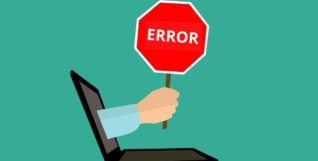
How to not get caught in the comparison trap
- January 2, 2019
- Marketing Team
Freelancers face many kinds of struggles, including financial and job insecurity, lack of routine, isolation, and blurred boundaries between life and work.
One freelancing challenge that doesn’t get touched on enough, however, is the comparison trap. This is when you compare your life to others and make judgements about yourself based on those comparisons. We all do it.
We try to look for others in order to validate ourselves or as evidence of how we’re failing. It seems, though, that freelancers are particularly susceptible to this problem. Let’s explore some of the reasons why.
Social media
Freelancers tend to spend a lot of time on social media. This is because platforms such as LinkedIn, Facebook, and Twitter allow freelancers to promote themselves, share their work, network, look for job opportunities, and find inspiration. Problems arise, though, when you compare yourself to freelancers’ social media profiles.
You may create this opinion of other freelancers as being highly productive and better than you in every respect, simply based on their social media activity. As a result of this social comparison, you may come to believe you’re lazy, not doing enough, and not good enough.
Your portfolio
Your portfolio is meant to showcase the very best examples of your work. So you may create a portfolio and be proud of what you’ve accomplished so far. But then you come across the portfolio of another freelancer, much younger than you, who has worked for bigger and more reputable companies.
And this can set off thoughts about how you’re not trying hard enough and that you must be failing as a freelancer. Freelancers often fall into the trap of thinking that their work defines their self-esteem.
Your personal website
As a freelancer, it’s often crucial to have a personal website or blog. Your website should look professional and help potential clients to realise the value that you can offer them. Having a high-quality and easy-to-use website is an investment. It is often a way for freelancers to source new clients.
But like with a portfolio, you may come across other freelancers’ websites and think that they must be far more talented than you, based on their website alone. This might make you feel insecure and embarrassed about sharing your website or blog with others.
How much you earn
Freelancers can also feel down about themselves based on how much they’re earning. It’s a common freelancing struggle to be stuck with low-paying work or to earn below what you feel you’re worth.
It can be extremely challenging to set, negotiate, and raise your rates as a freelancer. You may try to find out what other freelancers in your situation are earning by researching market rates or reading blogs for advice.
In freelancing groups on Facebook, there are often freelancers asking about what rates they should set, and other freelancers will reply with how much they charge.
Reading these social media posts or other information online, it can sometimes feel disheartening to see that freelancers are earning much more than you are – and for the same kind of work.
You may come to believe this is because you lack ability and value, rather than see that differences in rates can come down to years spent freelancing, qualifications, negotiating skills, or differences in specialities.
The comparison trap isn’t inevitable and unsolvable for freelancers. You can avoid it by developing confidence and trust in your abilities.
It’s also important to see the bigger picture and realise that every freelancer starts off differently and faces unique challenges along the way; challenges that we aren’t even aware of.
Building healthy self-esteem and maintaining a down-to-earth perspective are both essential to success as a freelancer.
Sam Woolfe writes for Inspiring Interns. He is particularly interested in self-development, psychology, mental health, and the future of work. Most of all, though, Sam is passionate about helping people find work that is meaningful and fulfilling. You can follow him on Twitter and find more of his work at www.samwoolfe.com.






